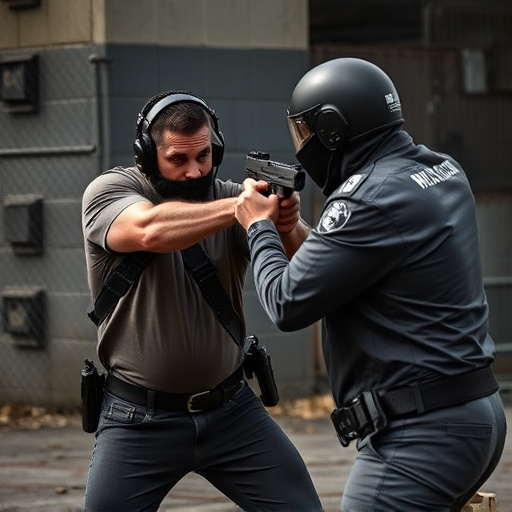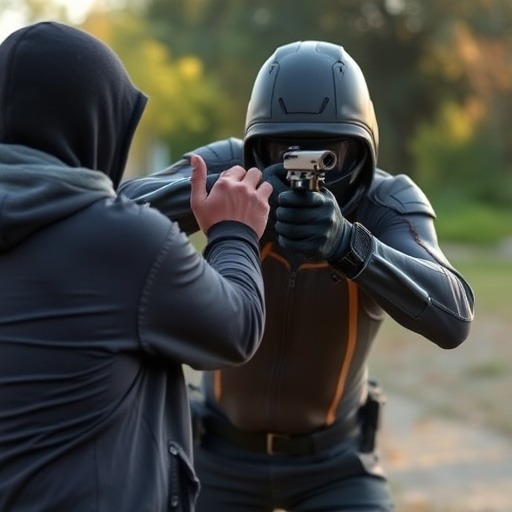Understanding electrical current flow is paramount in designing safe yet effective self-defense tools like stun guns, especially for women. Current spread patterns, influenced by resistance, conductivity, and shape, determine the stun gun's radius of impact on the body's nervous system. To choose the best self defense stun gun for women, consider one-button activation, discreet size, durability, and additional safety features like alarms or flashlights to ensure optimal effectiveness in high-stress situations while minimizing risks.
Electrical current spread patterns offer crucial insights into how self-defense tools like stun guns affect targeted areas. Understanding these patterns is essential, especially for women seeking effective yet safe personal protection. This article delves into the science behind electrical current, its behavior, and how it interacts with the body. We explore the impact of stun guns on targeted zones, providing a comprehensive guide to analyzing spread patterns. Additionally, we discuss factors influencing current distribution and offer key considerations when choosing the best self-defense stun gun for women.
- Understanding Electrical Current and Its Behavior
- The Impact of Stun Guns on Targeted Areas
- Analyzing Spread Patterns: A Comprehensive Guide
- Factors Influencing Current Distribution
- Choosing the Right Self-Defense Tool: Key Considerations for Women
Understanding Electrical Current and Its Behavior

Electrical current, a fundamental aspect of physics and engineering, is the flow of electrons through a conductive medium. Understanding its behavior is crucial, especially in scenarios where safety is paramount, such as when considering the best self-defense stun gun for women. By studying how current spreads and interacts with different materials, engineers can design more effective and safe devices, including self-defense tools that utilize electric shock as a deterrent.
The pattern of electrical current spread is influenced by factors like resistance, conductivity, and the shape and material of the conductors involved. In the context of self-defense stun guns, this knowledge helps in optimizing the current’s intensity and distribution to ensure incapacitation without causing severe harm. This precise control over current flow not only enhances the effectiveness of personal defense devices but also underscores the importance of thorough analysis in designing tools that balance safety and power.
The Impact of Stun Guns on Targeted Areas

Stun guns, often considered as a best self-defense tool for women due to their non-lethal nature, deliver an electric current that disrupts the body’s nervous system momentarily. This current spreads from the point of contact, creating a circular pattern around the stun gun’s probe tips. The impact is localized, affecting muscles and nerves within the immediate area. Unlike some misconceptions, the current does not travel in straight lines but rather forms a radial pattern, ensuring that the surrounding tissues remain largely unaffected.
Understanding this spread pattern is crucial for users to comprehend the weapon’s effectiveness. For instance, when aiming at a potential attacker’s upper body, the stun gun’s probes should make contact with vital areas like the neck or shoulders. The current will then radiate outwards, temporarily paralyzing muscles and causing the target to drop their arms and lose balance, providing an opportunity for the user to escape.
Analyzing Spread Patterns: A Comprehensive Guide

Analyzing spread patterns is a critical aspect of understanding how electrical current flows and interacts with various materials. This comprehensive guide delves into the intricacies of studying these patterns, offering valuable insights for professionals in diverse fields. By examining the behavior of current flow, researchers and engineers can optimize designs, enhance safety measures, and develop innovative solutions.
In terms of self-defense, understanding spread patterns is particularly relevant when considering the best self-defense stun guns for women. These devices utilize electrical current to incapacitate potential attackers, and knowing how the current spreads can ensure their effectiveness. This knowledge allows users to make informed decisions, choosing tools that maximize impact while minimizing risks associated with inappropriate use.
Factors Influencing Current Distribution

The distribution of electrical current within a circuit is a complex phenomenon influenced by various factors. When considering the application of a self-defense stun gun—a powerful tool designed for personal safety, particularly for women—understanding current spread patterns becomes vital. The path and intensity of current flow can significantly impact the effectiveness of such devices, dictating their range, power output, and overall performance.
Key factors shaping current distribution include the circuit’s geometry, material properties of components, and external conditions. For instance, the layout of a stun gun’s internal wiring and the choice of conductive materials directly affect current density and flow direction. Moreover, environmental variables such as temperature and humidity can alter electrical conductivity, thereby influencing the overall performance characteristics, especially in demanding conditions where a reliable and consistent current delivery is paramount for user safety.
Choosing the Right Self-Defense Tool: Key Considerations for Women

When it comes to choosing a self-defense tool, women have unique considerations. One of the most popular and effective options is a stun gun designed specifically for self-defense. When selecting the best self defense stun gun for women, several factors come into play. First and foremost, ease of use is critical; a simple, one-button activation mechanism ensures that even in a high-stress situation, the device can be deployed promptly.
Weight and size are also important considerations. Women may prefer smaller, lighter stun guns that are easy to carry discreetly, whether in a purse or on a key chain. Moreover, durability and reliability are essential; the device should withstand regular use and remain functional in various conditions. Features like a built-in alarm or flashlight can offer additional protection and deterrence.
Electrical current spread pattern analysis is a crucial aspect of understanding the effectiveness of stun guns as self-defense tools, particularly for women seeking the best protection. By examining how current flows and spreads across targeted areas, we can gain insights into the impact and range of these devices. This knowledge empowers individuals to make informed decisions when choosing the right self-defense tool, ensuring their safety and peace of mind. For women, selecting a stun gun that delivers a powerful yet controlled current flow can be life-saving. Staying informed about such technical details is essential in navigating the options available for personal protection.
